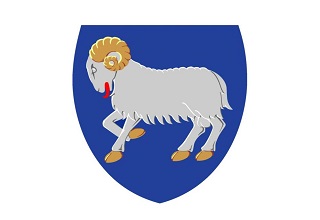Regarding the Inspection and Quarantine Requirements for Fresh Passion Fruits from Vietnam to China
In accordance with Chinese laws and regulations and the "Protocol on Phytosanitary Requirements for the Export of Fresh Passion Fruit from Vietnam to China between the General Administration of Customs of the People's Republic of China and the Ministry of Agriculture and Environment of the Socialist Republic of Vietnam", from now on, the import of fresh passion fruit from Vietnam that meets the following relevant requirements will be allowed.
I. Inspection and quarantine basis
(1) Biosafety Law of the People's Republic of China;
(2) "Law of the People's Republic of China on Entry and Exit Animal and Plant Quarantine" and its implementing regulations;
(3) Food Safety Law of the People's Republic of China and its implementing regulations;
(4) Measures for the Supervision and Administration of Inspection and Quarantine of Inbound Fruits;
(5) Protocol on Phytosanitary Requirements for the Export of Fresh Passion Fruit from Vietnam to China between the General Administration of Customs of the People’s Republic of China and the Ministry of Agriculture and Environment of the Socialist Republic of Vietnam.
II. Names of commodities allowed to enter the country
Passion fruit is purple passion fruit, scientific name Passiflora edulis , English name Passion fruits.
III. Permitted Origin
Passion fruit producing areas in Vietnam.
IV. Approved orchards and packaging plants
Passion fruit orchards and packaging plants exported to China should be audited by the Ministry of Agriculture and Environment of Vietnam and approved for registration by the Chinese Customs. Registration information includes name, address and registration number, so as to accurately trace the source when the exported goods do not comply with the relevant provisions of this announcement. Before the start of trade, the Ministry of Agriculture and Environment of Vietnam should provide the Chinese Customs with a registration list, which will be published on the customs website and updated regularly after review and approval by the Chinese Customs.
V. Quarantine Pests of Concern
1. Guava fruit fly (Bactrocera correcta)
2. Oceanic mealybug (Planococcus minor)
3. Long-tailed mealybug (Pseudococcus longispinus)
4. Diplospora cocoiformis (Lasiodiplodia theobromae)
5. Pythium ornate (Globisporangium splendens)
VI. Pre-export management
1. Orchard management
1. Orchards exporting to China should establish a sound quality management system and traceability system under the supervision of the Ministry of Agriculture and Environment of Vietnam, implement good agricultural practices (GAP), maintain sanitary conditions in orchards, and implement integrated pest management (IPM), including regular pest monitoring surveys; physical, chemical or biological control of pests; and other preventive or control measures.
2. The Ministry of Agriculture and Environment of Vietnam shall formulate a management plan for quarantine pests of concern to the Chinese Customs in accordance with the requirements of International Standard for Phytosanitary Measures No. 6 (ISPM 6), and organize and implement orchard monitoring during the growing season. In addition to visual inspection, a variety of physical or chemical methods should be used to trap and monitor pests. Once pests of concern to the Chinese Customs are detected, chemical or physical integrated prevention and control measures shall be taken immediately.
3. Targeting guava fruit fly ( Bactrocera correcta ), traps must be used for monitoring; for the oceanic mealybug ( Planococcus minor ) and the long-tailed mealybug ( Pseudococcus longispinus ) and other pests, with a focus on the fruit, branches, stems and leaves; for Lasiodiplodia theobromae ) and Globisporangium splendens ), if disease samples are found with suspicious symptoms, they must be sent to the laboratory for testing.
4. Pest monitoring and control should be carried out under the guidance of professional technicians. The technicians should receive training from the Ministry of Agriculture and Environment of Vietnam or its authorized training institutions.
5. The Ministry of Agriculture and Environment of Vietnam shall keep records of monitoring and control of pests in orchards and provide them to the Chinese Customs upon request. The control records shall include information such as the name, active ingredient, dosage and time of the chemical agents used during the growing season.
2. Packaging plant management.
1. The processing, packaging, storage and shipment of passion fruit exported to China must be carried out under the quarantine supervision of the Ministry of Agriculture and Environment of Vietnam or its authorized personnel.
2. The packaging factory for passion fruit exported to China should be clean and hygienic, with hardened ground and raw material field and finished product warehouse. The packaging factory should establish a traceability system to ensure that the passion fruit exported to China can be traced back to the registered orchard, and record the processing and packaging date, the name of the source orchard or its registration number, quantity, export date, export quantity, destination country, container number and other information.
3. The storage and processing areas for passion fruit exported to China are relatively independent and reasonably laid out, and are isolated from the living areas and at an appropriate distance.
4. The processing of passion fruit exported to China should include manual selection, removal of diseased, insect-infested, rotten, deformed fruits, branches, leaves, fruit stalks or other plant residues, removal of insect eggs and pathogenic spores attached to the surface of the fruit, etc., to ensure that passion fruit exported to China does not carry harmful organisms or other impurities of concern to Chinese customs.
5. If packaged passion fruit needs to be stored, it should be immediately put into storage and stored separately to avoid reinfection by pests.
(3) Packaging requirements
1. The packaging materials should be clean, hygienic, unused, and in compliance with relevant Chinese plant quarantine requirements. If wooden packaging is used, it must comply with the requirements of the International Standard for Phytosanitary Measures No. 15 (ISPM 15).
2. Each packaging box must be labeled in English or Chinese with the fruit name, variety, country, origin, orchard or its registration number, packaging plant or its registration number, etc. Each packaging box and pallet must be labeled with "输往中华人民共和国" or "Exported to the People's Republic of China" in Chinese or English.
(IV) Pre-export inspection and quarantine.
1. In the first year after this announcement takes effect, the Ministry of Agriculture and Environment of Vietnam shall conduct sampling inspection at a rate of 2% of each batch of passion fruit. If there are no plant quarantine issues within one year, the sampling rate will be reduced to 1%.
2. If quarantine pests of concern to the Chinese Customs are found in live bodies, branches, leaves or soil, the entire batch of goods shall not be exported to China, and the export of passion fruit from the relevant orchards and packaging factories to China in this export season shall be suspended depending on the situation. The Vietnamese Ministry of Agriculture and Environment shall find out the reasons and take corrective measures. At the same time, the seizure records shall be kept and provided to the Chinese Customs upon request.
(V) Requirements for plant quarantine certificates.
If the quarantine is passed, the Ministry of Agriculture and Environment of Vietnam shall issue a phytosanitary certificate in accordance with the International Standard for Phytosanitary Measures No. 12 (ISPM 12), indicating the name or registration number of the orchard and packaging plant, and indicating in the additional statement: "This consignment of passion fruits complies with the requirements specified in the Protocol on Phytosanitary Requirements for Export of Fresh Passion Fruits from Viet Nam to China, and is free from quarantine pests of concern to China."
VII. Entry Inspection and Quarantine and Disqualification Handling
When passion fruit exported to China arrives at the Chinese entry port, Chinese Customs will implement inspection and quarantine in accordance with the following requirements.
1. Verification of relevant certificates and logos.
1. Check whether the imported passion fruit has obtained the "Entry Animal and Plant Quarantine Permit".
2. Check whether the plant quarantine certificate complies with the provisions of Article 6(5) of this Announcement.
3. Check whether the markings on the packaging boxes or pallets comply with the provisions of Article 6, Item (3) of this Announcement.
(2) Entry inspection and quarantine.
1. Passion fruit exported to China should be imported from ports where Chinese customs permits the import of fruit.
2. According to relevant laws, administrative regulations, rules, etc., imported passion fruit shall be subject to inspection and quarantine, and those that pass the inspection and quarantine shall be allowed to enter the country.
(III) Handling of non-conforming items.
1. If the goods are found to be from orchards or packaging plants that are not registered with the Chinese Customs, the goods will not be allowed to enter the country.
2. If quarantine pests of concern to the Chinese Customs or other quarantine pests newly emerging in Vietnam are found, or soil or plant residues are found, the goods will be treated with pest control, returned or destroyed.
3. If any of the goods are found not to comply with China's national food safety standards, the batch will be returned or destroyed.
4. If the above non-compliance is found, China Customs will notify the Ministry of Agriculture and Environment of Vietnam and suspend the import of passion fruit from the relevant orchards or packaging factories in this export season as appropriate. The Ministry of Agriculture and Environment of Vietnam should find out the reasons for non-compliance and urge the relevant orchards or packaging factories to make rectifications until the relevant rectification measures are effectively implemented and recognized by China Customs.
GACC
April 22, 2025




